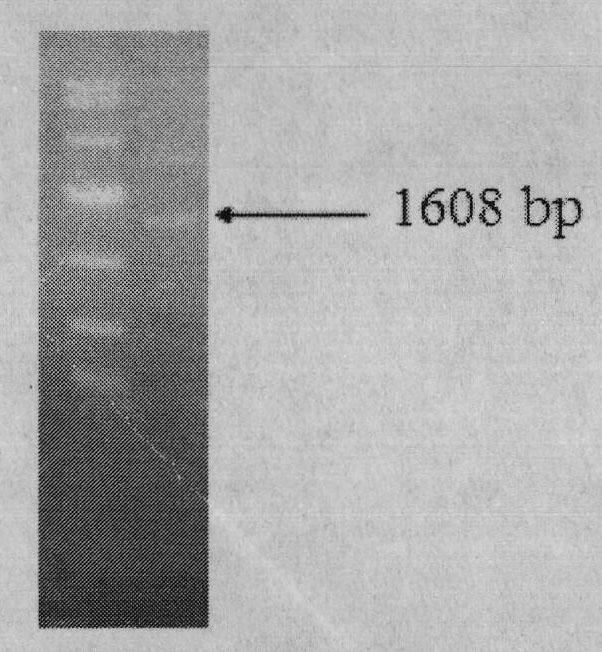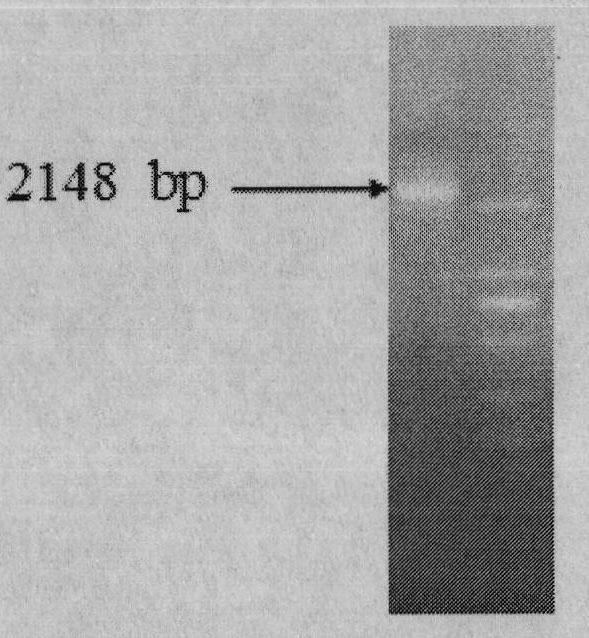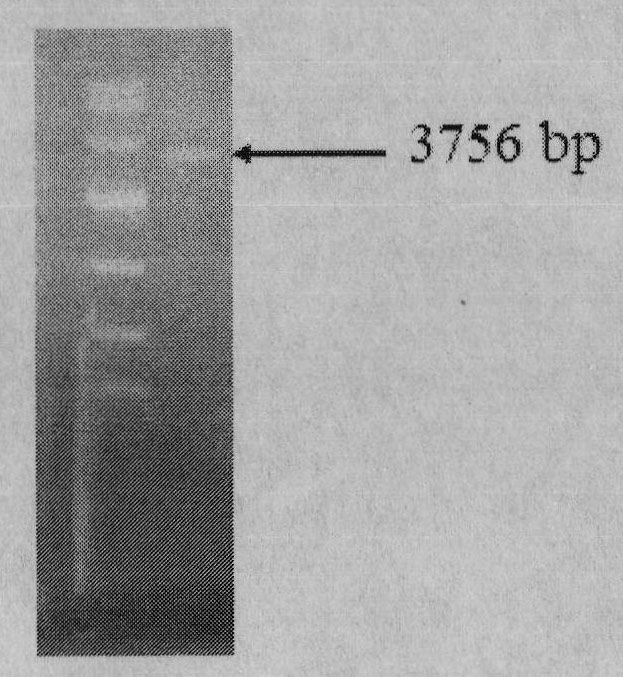Novel selective marker and application thereof in plant genetic transformation
A technology of selection marker and plant expression vector, applied in the field of safe selection marker and its application in obtaining transgenic plants, can solve the problem of inability to play a role, inability to distinguish transformed and non-transformed cells well, delaying adventitious bud differentiation, etc. problems, to achieve the effect of addressing security concerns
- Summary
- Abstract
- Description
- Claims
- Application Information
AI Technical Summary
Problems solved by technology
Method used
Image
Examples
Embodiment 1
[0045] Embodiment 1 Cloning of safe selection marker promoter and gene (cloning promoter and gene full-length fragment by fusion PCR)
[0046] 1) Select genes from Solexa sequencing data
[0047] ①Plant material and treatment
[0048] The plant material is saline-alkali tolerant soybean HJ-1, which is hydroponically cultivated with Hoagland basal culture medium, and treated with 2% PEG stress when the soybean seedling grows the first true leaf. The roots and leaves of the drought-treated material and the control material were collected after 48 hours of stress treatment, and three samples were taken for each sample. After sampling, the samples were wrapped in new tinfoil paper and immediately stored in liquid nitrogen at -80°C;
[0049] ②Solexa sequencing and data analysis
[0050] Solexa sequencing was completed by BGI Shenzhen; the differentially expressed genes in roots and leaves were analyzed, and the gene GmP5CS co-expressed in roots and leaves was found. The study con...
Embodiment 2
[0079] Example 2 Construction of the plant expression vector pCAMBIA1301-DP-P5CS with a safe selection marker
[0080] After the vector pCAMBIA1301 and fusion fragment DP-P5CS were cut with Xho I and Sac I, the fusion fragment DP-P5CS was inserted into pCAMBIA1301 to obtain pCAMBIA1301-DP-P5CS. The specific method is:
[0081] 1) Digest vector pCAMBIA1301 with Xho I and Sac I, and detect by 1% agarose gel electrophoresis (see Figure 4 , where the left side is DNA marker 10000, the arrow indicates the fragment size of the corresponding band), and the 9703bp vector fragment was recovered;
[0082] 2) Ligate the vector fragment with the promoter and gene fragment obtained by digestion, transform Escherichia coli, smear it on a 50 mg / L kanamycin LB plate, then select positive clones for PCR detection, and perform sequencing if the detection is correct, and Extract the corresponding positive clone plasmid and name it pCAMBIA1301-DP-P5CS;
[0083] 3) Digest the vector pCAMBIA130...
Embodiment 3
[0085] Example 3 Agrobacterium-mediated transformation of soybean cotyledon nodes and screening and detection of safe selection marker transgenic soybeans
[0086] 1) Agrobacterium co-transformation:
[0087] Using CaCl 2 Transform the plasmid pCAMBIA1301-DP-P5CS into Agrobacterium EHA105, and transform soybean Changnong 13 by Agrobacterium-mediated transformation of cotyledonary nodes;
[0088] 2) Screening of transgenic soybeans with safe selection markers:
[0089] When soybean seedlings grow the 2nd to 3rd pairs of true leaves, carry out stress treatment with 4% PEG for 5 days, the growth condition of transgenic plants is good, and the leaves of non-transgenic plants become yellow and wilted due to dehydration, so that soybean transformants can be screened, such as Figure 7 As shown, A is a transformed plant, and B is a non-transformed plant, which proves that the gene has the ability to resist drought so as to enhance the drought tolerance of the transgenic plant;
[...
PUM
 Login to View More
Login to View More Abstract
Description
Claims
Application Information
 Login to View More
Login to View More - R&D
- Intellectual Property
- Life Sciences
- Materials
- Tech Scout
- Unparalleled Data Quality
- Higher Quality Content
- 60% Fewer Hallucinations
Browse by: Latest US Patents, China's latest patents, Technical Efficacy Thesaurus, Application Domain, Technology Topic, Popular Technical Reports.
© 2025 PatSnap. All rights reserved.Legal|Privacy policy|Modern Slavery Act Transparency Statement|Sitemap|About US| Contact US: help@patsnap.com



